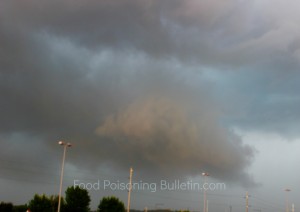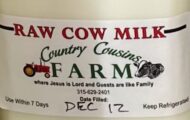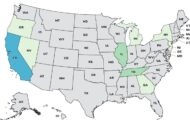The U.S. Department of Agriculture’s (USDA) Food Safety and Inspection Service (FSIS) has compiled some food safety tips for flood victims in Nebraska. Here is what the agency recommends:
 Before the storm, store food on shelves that will be out of the path of floodwaters. But appliance thermometers. In the freezer, gather food together, to help it stay cold longer. If you lose power, a refrigerator will keep food cold for about 4 hours if you keep the door closed. A full freezer will keep food at a safe temperature for about 48 hours, a half-full freezer will keep food at a safe temperature for 24 hours. Keep the door closed as much as possible. Before you eat food from a powerless fridge or freezer, check the temperature, if the thermometer reads 40° F or below, the food is safe.
Before the storm, store food on shelves that will be out of the path of floodwaters. But appliance thermometers. In the freezer, gather food together, to help it stay cold longer. If you lose power, a refrigerator will keep food cold for about 4 hours if you keep the door closed. A full freezer will keep food at a safe temperature for about 48 hours, a half-full freezer will keep food at a safe temperature for 24 hours. Keep the door closed as much as possible. Before you eat food from a powerless fridge or freezer, check the temperature, if the thermometer reads 40° F or below, the food is safe.
If there is no thermometer in the freezer, check each package. If food still contains ice crystals or is at 40°F or below when checked with a food thermometer, it may be safely refrozen. Perishable food (such as meat, poultry, fish, soft cheeses, milk, eggs, leftovers and deli items) that has been kept in a refrigerator or freezer above 40° F for two hours or more should be thrown away.
Throw away all foods that come into contact with floodwaters that are not in waterproof containers such as cans or jars. Containers that are not considered waterproof include those with screw-caps, snap lids, pull tops, and crimped caps. Wooden cutting boards, plastic utensils, baby bottle nipples and pacifiers should also be thrown away if they have had contact with floodwaters.
Metal pans, ceramic dishes and utensils can be saved. Wash them with hot soapy water and sanitize them by boiling them in clean water or by immersing them for 15 minutes in a solution of 1 tablespoon of bleach per gallon of drinking water.
Never taste food to determine if it is safe. And when in doubt, throw it out!




